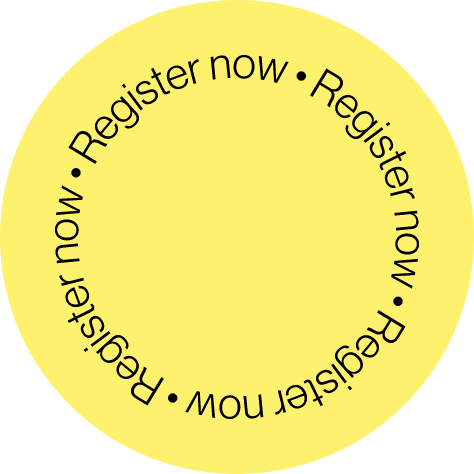When Malph Minns thinks about tennis pro Andy Murray, he thinks about the building blocks that went into making him an elite athlete.
“Early in Andy Murray’s career, he asked himself, what support and expertise do I need to help make me the world’s number one tennis player? The answer he arrived at was a sports psychologist, a nutritionist, a trainer, someone to manage logistics, and a coach to help with his technique,” Minns said. “Traditionally, players hire an ex-player that tries to serve all of those needs. But one person can’t have the level of expertise needed to deliver all of this effectively and to an optimum level.”
Minns translates this into his role with Strive Sponsorship and to agencies in general. “If you want to deliver a gold medal or a grand slam for your client, what are the component parts needed,” Minns asked. “When you translate this to business, that’s what defines success for our clients. What are they trying to achieve? Not the activities but the outcomes. Subsequently you identify the expertise and activities needed to give the best chance of success.”
Enter the changing world of marketing, advertising, strategy, and design agencies, in which firms are adopting “distributed network” or “hub and spoke” models to curate virtual or in-house teams of talent. Rather than hiring a traditional agency, typically one tied to a big network, brands are discovering companies with these distributed networks of talent that can be plugged in to create solutions.
Strive, for example, recognizes that parts of a client brief often fall outside of traditional agency expertise, but it can be cost-prohibitive for agencies to bring in the right third parties. So, when needed, Strive aggregates the market’s knowledge and skills and taps a network of specialist partners to supplement its own expertise.
It’s an exciting disruption. We spoke with six agency founders and directors to learn more about some of the latest trends and models in the U.S. and the U.K.
Modern Models Abound
Take Buzzbar for example. It’s a walk-in, pit-stop-style media and production agency in London offering pay-by-the-hour services like website design, content, video production, and social media. A Forbes article calls it, “...everything agencies want to be. Agile, open, honest and do killer work.” Clients can walk in (à la the Apple Genius Bar) and collaborate with Buzzbar’s full-time and virtual staff. Buzzbar says this approach overcomes key challenges of the traditional agency model, including high costs and red tape, and clients benefit from the varied perspective and skills of the Buzzbar team.
The shift toward a distributed network model is, to some extent, a reaction to the deficiencies of larger, more traditional agencies. But it’s also part of a broader cultural shift in how we approach a problem -- think Uber, AirBNB, and the gig economy as a whole. “The ability to break down a problem and think of it differently, the ability to use the value of the network to solve a problem, instead of a fixed answer, we’re experiencing that as consumers as much as we are as employees, in all areas of life,” Minns said.
The shift is also inextricably linked to the digital revolution, which has changed the way we live -- and work -- in myriad ways. “Ad agencies went through the digital explosion journey as did everyone else,” said Daniel Ward-Murphy, strategy director of Human. “But there are as many branches of digital work as there as other areas of expertise within an agency. It’s now reached a tipping point.”
Human’s approach is often to form project teams comprised of talent from other agencies. “Myself and Human are early embracers of this future that’s beginning now. We will be increasingly working in multi-agency teams for clients,” Ward-Murphy said. “It wouldn’t surprise me if we see a shift from 70 to 80 percent of work coming directly from clients to only 30 percent coming directly from clients and the rest from other agencies referring agencies to be part of those multi-agency teams.”
Traditional agencies that want to maintain the ownership of that one-to-one relationship with their client, haven’t modernized, Ward-Murphy said. “They haven’t realized that they’re playing the part of a cog in a big wheel.”
“If you’re a 20, 30, 50, even 80-person agency, trying to be an expert in all of these different skills that you have to deliver to serve your client well has become more and more difficult. For me, the answer is to use specialists in the right area to deliver a result.”
Daniel Ward-Murphy, strategy director of Human
A confluence of other factors also shapes this space, including competition and revenue generation. “The convergence of communication channels means that everybody is now competing against everybody. Agencies are taking on much smaller clients than ever before,” Minns said.
We see another innovative approach in Curated. Its founder, George Raptis, had previously built a company and experienced firsthand the difficulties in outsourcing high-value work. “Having spent a lot of time in coworking spaces, I had also discovered that there was an emerging workforce of what we call "boutique teams", small specialist teams with particular areas of focus. Coworking has done a great job of bringing these teams to life,” Raptis said.
“Our role isn't necessarily to help people build full-time remote teams,” Raptis said. Rather, Curated gives companies the ability to deliver high-priority activities that can't be completed internally. “Often you need expertise for those projects. We find our clients and boutique teams are able to create a new work dimension, where company culture plays less of a role, and rather you're able to enhance each other's skills because you're working outside typical company bureaucracy or ways of doing things,” Raptis said.
This approach is also a differentiator. Innovation consultancy Elemental also builds specialized teams for its clients. “When we started to lay the groundwork for Elemental it became really clear that if we were going to compete in this space we needed to bring something different to the table,” said founder Paolo Campisi.
“We’ve been fortunate to get advice from a lot of former clients from various industries, which has led us to aim to give our clients the best of the consulting world, without the traditional baggage. It’s a tall order, because there is no single model, process, rate card, or product. It’s all got to be built bespoke for them,” Campisi said.
But what about the traditional agency?
We’re excited by all of the emerging models we see. But it’s still, and always has been, about the client and the work. “It’s not about how do we do things differently, it’s about how do we deliver the best outcome,” Minns said. “For the client, it works because we curate talent on the basis of skillset, industry knowledge, budget, territory, availability.”
While there’s still a need for traditional agency relationships and business models (especially for mission-critical employees), now is the time for these “hub and spoke” agencies to shine. “Think of all the projects that you put off because you're too busy, or you don't know where to start. That's Curated's sweet spot,” Raptis said. “Over time, we believe that in addition to increasing capacity and lowering procurement and outsourcing costs, companies will take a more hub and spoke approach to project-based work.”
“I definitely see these hybrid-agencies as a bit of democratization of creative work. Hopefully this will push traditional agencies to see the benefits of working with hybrid teams, or to seek something different,” he said. “Honestly, I don’t know what the future of the large holding companies is, but I know, right now, it’s a great time to be a small or medium size studio.”
Cody Min, founder of Astronaut Monastery
Sam Joseph, founder and strategy director of TBD Labs, views this shift through the lens of emerging tech. “I think there has always been specialized small shops that focus on cutting edge technology. They exist because big agencies simply do not have commitment or desire to invest in these types of technologies,” Joseph said.
TBD Labs takes a proactive approach to fill a recognized gap. “There is no economies of scale to go along with their existing production models. To most agencies, it isn’t a problem. They are OK being behind because they know they provide things clients will want, and will be able to slowly adapt as needed when these technologies come forward,” Joseph said.
“Ultimately, it comes down to a client’s resources -- traditional players in the space will do fine but at the enterprise level, I see it getting harder and harder for them to work in rapid growth industries at the ground level because it’s a challenge for them to right-size their offering,” Campisi said.

The Industry Response is Positive
Competitors and clients alike are embracing the disruption. For traditional outsourcing platforms, Raptis says that Curated fills a unique position as a first mover in the space. They “don't see us a competitor because we're focused on a different market and project value. Curated's focus on the work that isn't suitable for a freelance platform means that we're even starting to form partnerships with other industry players who see us as a reliable option for their existing user base,” he said.
From a client perspective, it’s refreshing. These new agencies are not only transparent in how they source and staff projects; they specifically market this as an advantage. “All our clients are either refreshed by our model, or have already heard of it from a different studio and have already bought in,” Min said. “For many of the early stage ventures we work with (and the venture capital firms that back them), we often find our ability to flex the budget is quite appealing. They often check out some of the bigger brand-name agencies, and are quickly turned off by their massive budgets.”
These distributed network agencies have also perhaps found a solution for the age-old challenge of agency selection. “People appreciate the fragmentation. It’s still a challenge to connect the right clients with the right agencies,” Ward-Murphy said.
The model might also remove some of the administrative burden from agency leaders, who need to balance talent provision with making a margin in profitability. “A lot of them are so focused on managing a business and people that they’ve lost the reason they got into the business,” Minns said. “They think this is a model that could reclaim that.”
And then, there’s the reality of the scope of work itself. “Generally speaking, you don’t need a 40-person team to launch a small brand’s visual identity,” Min said.
Tapping Non-Traditional Talent and Building Freelance Communities
A few years back, Campisi read an article that stuck with him, about how “...the traditional assumption is that capital is short, and talent is long. Which has to be a lie from some dusty 80’s business school textbook,” he said.
The fact is, good talent is short. ManpowerGroup’s Talent Shortage Survey reports that companies across the globe face the most acute talent shortage since 2006. The survey proposes a “Build, Buy, Borrow, Bridge” solution, in which companies “go to the external market to find the best talent that cannot be built in-house in the timeframe required to fill immediate openings.”
Freelancers have long proven to have the hard and soft skills that brands and agencies clamor for, and they’re eager for opportunity. “People are more conscious of their personal brand if they’re working for themselves than if they’re working for a third party,” Minns said. This could manifest in greater productivity and output and also in how they manage themselves. “If you’ve chosen to work in a way like this, you want to do everything you can to make it work,” he said.
The client-side benefit comes in both quality of work and the cost to get it done. “If you can curate the best teams, then you can deliver the best work, and if you’re not loaded with the same fixed costs, you can deliver better work at a better price. There’s a challenge with productivity being judged on activity versus tangible outcomes. When you work in remote way, you’re judged on what you deliver, not when you deliver it,” Minns said.
Transparency is key for the talent, too. “We keep it simple -- we ensure that the project they’re going to be on will be the right fit. We’re transparent around rates, billables, time requirements,” Campisi said. “In such a tight labour market we have to be focused on attracting people who want to work with us. Finally, it’s about equality -- we have to be building diverse teams to bring products to market.”
Ward-Murphy and others look for attitude as much as they do skillset -- talent that is “emotionally attached to the client’s end result. That is the individual attitudinal culture that we want to create,” he said.
“We only bring the best and most suitable people to solutions. That in itself breeds the culture. People work with us because they, too, have found the same problems -- for traditional agencies, they’re working on jobs for clients because they’ve been told to, not because they want to or because they’re best suited to."
Malph Minns of Strive Sponsorship
A persistent challenge, however, is building a culture in which a team of virtual or freelance talent feels a part of it all. “The contract labor model is really great for flexibility but makes it hard for ultra-collaborative environments. We try to work with the same talent as much as possible, and we’re thinking of rolling out some exclusive events for the Astronaut Monastery team to make it feel like more of an environment, rather than a disparate Slack channel,” Min said.
Will it work?
While this disruption to the agency space is new and still reaching scale compared with traditional agencies, it’s also not all that unusual.
“We could also say that this distributed network approach has always been there -- it’s just that we’re redefining what we mean by network. You need to have the right people. To a degree, you do this when you curate a team from a traditional agency, you’re just curating from a much smaller pool. So it might take us longer to do but it should ultimately deliver you better outputs,” Minns said.
We think these agencies will continue to land clients and shape the space for the future. Multi-agency teams, virtual networks of full-time or freelance workers, larger talent pools, bigger territories, diverse service lines and industries are all on the horizon. And that’s because the distributed network model works, whether you think about how to optimize a player like Andy Murray or are hired to launch a new brand.
“That is the benefit of the model. If we understand the need, and we know who the good people are to solve that, then actually the breadth of skills we can offer are far wider than what a traditional agency can do,” Minns said. “Our ability to do more for our clients and ultimately to grow breadth of revenue is far superior to the traditional model.”
“The whole client-agency relationship needs to evolve to address the problem of management and process, in terms of how all of these different agencies and in-house teams fit together to deliver brilliant and cohesive work. Many get that wrong, but get it right and we will deliver much more value,” Ward-Murphy said.
Grand slam, indeed.



